Introduction
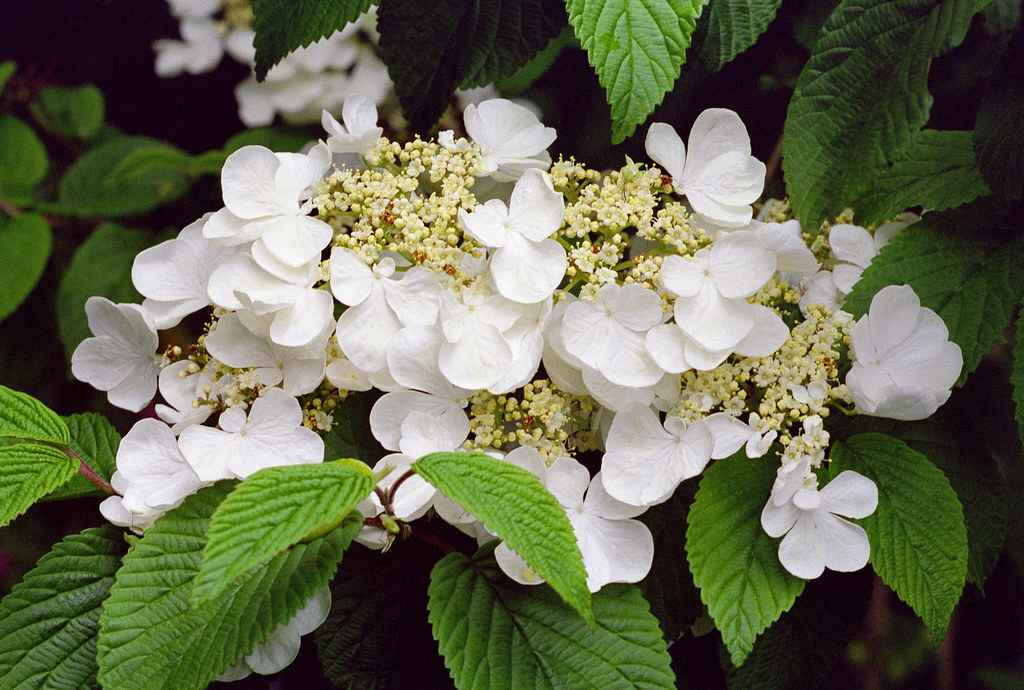
Welcome to the lush world of gardening enthusiasts! In this article, we dive into the captivating realm of Viburnum plicatum ‘Mariesii,’ commonly known as Doublefile Viburnum. As we explore the intricacies of growing and caring for this exquisite shrub, you’ll uncover tips for success, discover companion plants that complement its beauty, and gain insights into addressing common challenges.
Whether you’re a seasoned gardener seeking new additions or a beginner eager to cultivate a vibrant outdoor space, this concise guide is tailored to enhance your experience with Mariesii Doublefile Viburnum. Join us as we unravel the secrets behind its unique features and offer practical advice to ensure your gardening journey thrives with the allure of this remarkable shrub. Let’s embark on this green adventure together!
2. Growing and Caring for Mariesii Doublefile Viburnum
How to Grow and Care for Doublefile Viburnum
Planting:
To kickstart your journey with Mariesii Doublefile Viburnum, choose a well-draining location with partial to full sunlight. Dig a hole twice the size of the root ball, ensuring proper spacing between each plant. Incorporate organic matter into the soil for optimal growth.
Watering:
Mariesii Viburnum thrives in moist soil, especially during its initial establishment. Water consistently, allowing the soil to remain consistently damp but not waterlogged. Once established, it exhibits moderate drought tolerance, requiring less frequent watering.
Soil Requirements:
This shrub prefers slightly acidic to neutral soil. Ensure good drainage to prevent waterlogged conditions, which can be detrimental to its health. Amending the soil with organic matter enhances fertility and structure.
Temperature and Humidity:
Mariesii Doublefile Viburnum is resilient in a variety of temperature zones. It generally tolerates both cold and heat, making it adaptable to diverse climates. While it can withstand fluctuations, providing consistent moisture during extreme temperatures ensures optimal health.
Fertilizing:
Apply a balanced, slow-release fertilizer in early spring to promote vigorous growth and abundant blooms. Avoid over-fertilizing, as this can lead to excessive foliage at the expense of flowers.
Types of Viburnum
Mariesii is just one gem in the Viburnum family. Explore the diversity within this genus, each with its unique characteristics. From the compact European Cranberrybush (Viburnum opulus ‘Nanum’) to the showy Chinese Snowball Viburnum (Viburnum macrocephalum), there’s a Viburnum for every garden.
Doublefile Viburnum vs. Japanese Snowball Bush
Difference between Mariesii Doublefile Viburnum and the Japanese Snowball Bush (Viburnum plicatum), a close relative. While both share the appealing horizontal branching pattern, Mariesii features lacecap-type blooms, setting it apart from the round, snowball-like flowers of the Japanese variety.
Pruning
Keep your Mariesii viburnum shapely and vibrant with proper pruning. Conduct light pruning immediately after flowering to shape the plant and remove dead or damaged wood. Avoid extensive pruning, as Mariesii blooms on old wood.
Propagating Doublefile Viburnum
Expand your garden by propagating Mariesii Doublefile Viburnum. Propagation methods include softwood cuttings in early summer or semi-hardwood cuttings in late summer. Provide a well-draining rooting medium and maintain consistent moisture for successful propagation.
Overwintering Doublefile Viburnum
Ensure the winter survival of your Mariesii Doublefile Viburnum by applying a layer of mulch around the base. This protects the roots from extreme temperature fluctuations. In colder climates, consider wrapping the shrub in burlap for additional insulation.
By following these guidelines, you’ll foster a thriving Mariesii Doublefile Viburnum in your garden, adorned with its distinctive horizontal branches and delicate lacecap blooms. Stay tuned for more insights into addressing common issues and specific details about Maries Doublefile Viburnum in the upcoming sections!
Aimee Gardenia: A Comprehensive Guide To Care, Variations, And Companion Plants
3. Varieties and Alternatives
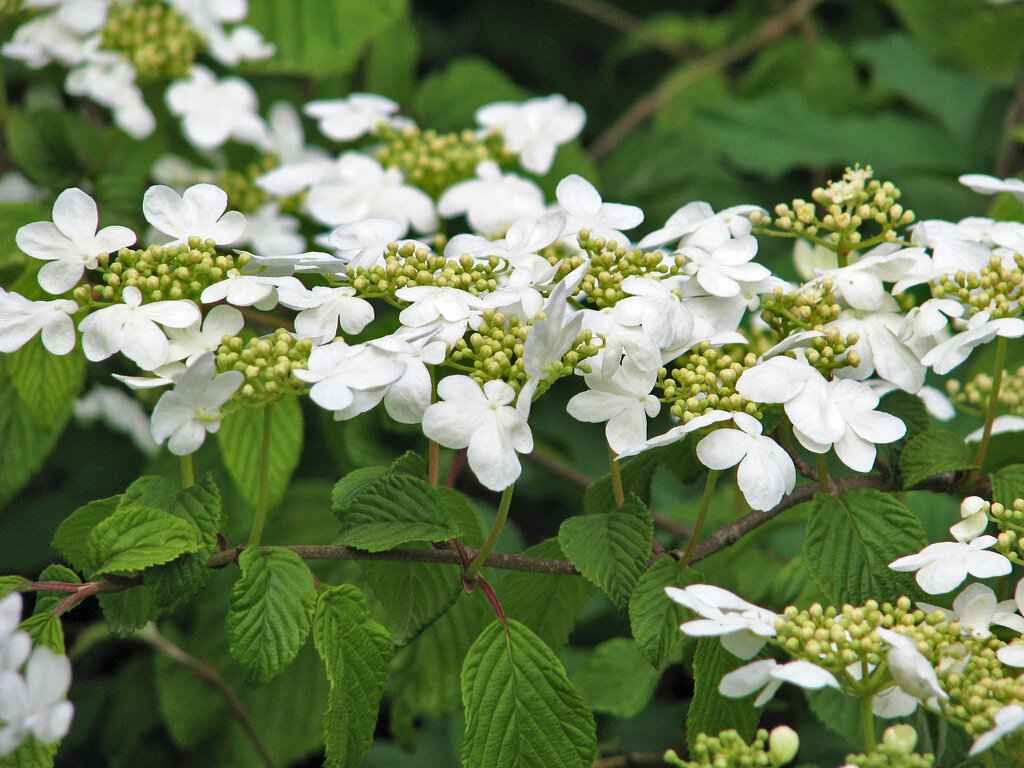
Recommended Companion Plants
Enhance the visual appeal of your garden by strategically pairing Mariesii Doublefile Viburnum with these delightful companion plants:
Rhododendron ‘English Roseum’
A stunning evergreen, English Roseum Rhododendron complements Mariesii with its lush foliage and vibrant blooms. Plant them together for a harmonious blend of colors and textures.
Myosotis sylvatica (Wood Forget-Me-Not)
Create a charming ground cover around Mariesii with Wood Forget-Me-Not. Its delicate blue flowers add a touch of whimsy, forming a beautiful contrast against the bold structure of the viburnum.
Hosta (Plantain Lily)
Introduce Hosta to the mix for an elegant ground cover with its broad, textured leaves. The varied hues of Hosta create an eye-catching arrangement when planted alongside Mariesii Doublefile Viburnum.
Alternative Plants to Consider
While Mariesii is a standout choice, consider these alternative Viburnum varieties for a diverse and dynamic garden:
Viburnum opulus ‘Nanum’ (European Cranberrybush)
Ideal for smaller spaces, the compact nature of European Cranberrybush adds versatility to your garden. Its distinctive lobed leaves and compact form make it a unique addition.
Viburnum odoratissimum (Sweet Viburnum)
Famous for its fragrant white flowers, Sweet Viburnum brings a delightful aroma to your outdoor space. Use it as a backdrop to Mariesii for a sensory-rich garden experience.
Viburnum farreri (Farrer Viburnum)
Embrace winter blooms with Farrer Viburnum, which graces your garden with fragrant pink flowers. Plant it strategically to extend the flowering season and add visual interest.
Viburnum setigerum (Tea Viburnum)
Known for its clusters of red berries, Tea Viburnum adds ornamental value and attracts wildlife to your garden. The berries persist into winter, providing a dynamic display.
Viburnum ‘Pragense’ (Prague Viburnum)
Prague Viburnum is prized for its evergreen foliage, ensuring year-round interest. Its compact form and glossy leaves make it an excellent choice for foundation plantings.
Viburnum macrocephalum (Chinese Snowball Viburnum)
Make a statement with the large, spherical blooms of Chinese Snowball Viburnum. Its showy flowers and vigorous growth contribute to a striking landscape.
Expand your gardening palette by incorporating these recommended companions and alternative Viburnum varieties. The diverse textures, colors, and fragrances will transform your garden into a captivating haven. In the next sections, we’ll delve into common issues, specific details about Mariesii Doublefile Viburnum, and answer frequently asked questions to further enrich your gardening experience. Stay tuned!
4. Common Issues and Solutions
Viburnum – What Is Wrong With My Shrub?
Gardening comes with its challenges, and Viburnums are no exception. Here’s a quick troubleshooting guide to identify and address common issues:
Yellowing Leaves:
If the leaves of your Viburnum are turning yellow, it could be a sign of nutrient deficiency or poor drainage. Amend the soil with a balanced fertilizer, and ensure proper drainage to revitalize your shrub.
Wilting or Drooping Foliage:
Inconsistent watering may lead to wilting or drooping foliage. Adjust your watering routine, keeping the soil consistently moist, especially during the establishment phase.
Lack of Blooms:
A lack of blooms might be attributed to insufficient sunlight. Ensure your Viburnum receives the recommended amount of sunlight, typically partial to full sun, for prolific flowering.
Viburnum – Pests and Diseases to Watch Out For
Aphids:
These tiny, sap-sucking insects can distort new growth. Use insecticidal soap or introduce natural predators like ladybugs to control aphid populations.
Powdery Mildew:
Powdery mildew appears as a white, powdery substance on leaves. Improve air circulation, and consider fungicidal treatments to prevent its spread.
Scale Insects:
Scale insects can infest Viburnums, leading to weakened growth. Apply horticultural oil or insecticidal soap to control scale infestations.
Common Problems With Doublefile Viburnum
Spots on Leaves:
Fungal diseases, like leaf spot, can cause dark spots on leaves. Prune affected foliage, ensure proper spacing for air circulation, and apply fungicides as a preventive measure.
White or Grayish Growth on Leaves:
This could be a sign of powdery mildew. Follow the same measures mentioned earlier for addressing powdery mildew issues.
By promptly identifying and addressing these common issues, you’ll ensure the health and vitality of your Viburnum. In the next sections, we’ll delve into specific details about Mariesii Doublefile Viburnum, covering planting and application tips, pro care advice, and frequently asked questions. Let’s continue our journey to cultivate a thriving garden!
5. Specifics of Maries Doublefile Viburnum
Maries Doublefile Viburnum Viburnum plicatum ‘Mariesii’
Maries Doublefile Viburnum, scientifically known as Viburnum plicatum ‘Mariesii,’ is a deciduous shrub celebrated for its stunning horizontal branching pattern and lacecap-type flowers. Here are the specific details you need to know:
Planting and Application
- Ideal Location: Choose a well-drained area with partial to full sunlight for optimal growth. Mariesii thrives in a variety of soil types but prefers slightly acidic to neutral conditions.
- Spacing: When planting multiple Mariesii Viburnums, ensure a spacing of about 6 to 10 feet between each shrub. This allows for proper air circulation, reducing the risk of fungal issues.
- Seasonal Planting: Spring or fall is the ideal time to plant Maries Doublefile Viburnum. This allows the shrub to establish its root system before the extremes of summer or winter.
#ProPlantTips for Care
- Regular Watering: While Mariesii is moderately drought-tolerant once established, regular watering is crucial during the first growing season. Keep the soil consistently moist.
- Mulching: Apply a layer of mulch around the base of the shrub to retain soil moisture and suppress weeds. Mulching also provides insulation during extreme temperatures.
- Fertilizing: Use a balanced, slow-release fertilizer in early spring to encourage robust growth. Avoid excessive fertilization, as this can lead to excessive foliage at the expense of blooms.
- Pruning: Conduct light pruning immediately after flowering to shape the shrub and remove dead or damaged wood. Mariesii blooms on old wood, so avoid extensive pruning that may remove potential flower buds.
6. Special Features
10 Creative Ways to Incorporate Viburnum in Your Garden
Mariesii Doublefile Viburnum is not just a shrub; it’s a versatile addition that can elevate the aesthetic of your garden. Here are ten creative ways to incorporate Viburnum into your outdoor space:
- Mixed Borders: Plant Mariesii along with other flowering shrubs and perennials to create dynamic and colorful borders. The horizontal branching pattern of Viburnum adds structure and visual interest.
- Foundation Planting: Use Maries Doublefile Viburnum as a foundation plant near the corners of your home. Its layered branches provide an appealing backdrop for shorter plants in the foreground.
- Focal Point in Island Beds: Position a well-pruned Mariesii as a focal point in island beds. The symmetry of its branches and the elegance of its blooms make it an eye-catching centerpiece.
- Hedging: Create a beautiful and functional hedge by planting multiple Mariesii Viburnums in a row. This not only adds privacy but also showcases the shrub’s stunning flowering display.
- Mixed Shrub Borders: Combine Mariesii with other Viburnum varieties or compatible shrubs to create diverse and textured shrub borders. The varied foliage and bloom times provide year-round interest.
- Understory Planting: Take advantage of Maries Doublefile Viburnum’s tolerance for partial shade by planting it under taller trees. This creates a woodland garden effect, enhancing the overall landscape.
- Container Gardening: Showcase Mariesii in large containers on your patio or deck. This allows you to enjoy its beauty up close while providing the flexibility to move the plant as needed.
- Espalier: Train Mariesii Viburnum against a wall or fence using espalier techniques. This not only saves space but also turns the shrub into a living work of art with its flattened and structured growth.
- Companion Planting with Bulbs: Pair Mariesii with spring-blooming bulbs like tulips or daffodils. As the bulbs bloom and fade, the Viburnum takes center stage with its late-spring flowering display.
- Butterfly and Pollinator Garden: Maries Doublefile Viburnum’s fragrant blooms attract butterflies and pollinators. Design a dedicated butterfly and pollinator garden by planting it alongside nectar-rich flowers.
Why You Should Avoid Growing Invasive Viburnums
While Viburnums are generally well-behaved, some invasive varieties can pose a threat to local ecosystems. Avoid planting invasive Viburnums like Viburnum dilatatum (Linden Viburnum) to protect native plant populations. Opt for non-invasive alternatives to maintain a healthy and balanced garden ecosystem.
Native Viburnums: Ideal Shrubs for Your Garden
Consider incorporating native Viburnums into your garden to support local wildlife and ecosystems. Native species like Viburnum plicatum (Japanese Snowball) and Viburnum opulus (European Cranberrybush) provide food and habitat for native birds and insects.
Create a Garden with Great Winter Interest
Maries Doublefile Viburnum contributes to a garden with year-round appeal. In winter, the bare branches create a captivating silhouette against the snow. To enhance winter interest, consider planting evergreen companions or shrubs with colorful berries.
Shrubs and Trees with Colorful Fruits and Berries in Winter
Enhance the winter landscape by incorporating Viburnums with colorful berries. Varieties like Viburnum opulus (European Cranberrybush) and Viburnum nudum (Smooth Witherod) bear vibrant fruits that persist through the winter, providing food for birds and a splash of color against the winter backdrop.
By exploring these creative ways to integrate Mariesii Doublefile Viburnum into your garden, you’ll not only enjoy its beauty but also contribute to a diverse and ecologically friendly outdoor space. In the following sections, we’ll address specific aspects of Mariesii, such as its blooming habits, common problems, and the importance of native Viburnums. Continue reading for a comprehensive gardening experience!
7. Detailed Care Guide
Doublefile Viburnum Shrub Care
Mariesii Doublefile Viburnum, with its elegant structure and delightful blooms, requires specific care to thrive. Let’s delve into the essential aspects of caring for this exceptional shrub:
Light
- Sunlight Requirements: Mariesii thrives in partial to full sunlight. Aim for at least 4 to 6 hours of direct sunlight daily for optimal flowering and overall health.
Soil
- Soil Type: While adaptable to various soil types, Maries Doublefile Viburnum prefers slightly acidic to neutral soil. Ensure good drainage to prevent waterlogged conditions.
Water
- Watering Schedule: During the establishment phase, water consistently to keep the soil consistently moist. Once established, Mariesii exhibits moderate drought tolerance, requiring less frequent watering.
Temperature and Humidity
- Temperature Range: This versatile shrub can tolerate a range of temperatures. While it adapts well to both cold and heat, providing consistent moisture during extreme conditions ensures its well-being.
Fertilizer
- Fertilizing Routine: Apply a balanced, slow-release fertilizer in early spring before new growth begins. Avoid over-fertilizing, as Mariesii prioritizes flower production over excessive foliage.
Types of Viburnum
Explore the diversity within the Viburnum genus, each offering unique features for your garden:
Doublefile Viburnum vs. Japanese Snowball Bush
Distinguish Mariesii from the Japanese Snowball Bush (Viburnum plicatum). While both share the appealing horizontal branching pattern, Mariesii features lacecap-type blooms, setting it apart from the round, snowball-like flowers of the Japanese variety.
Pruning
Proper pruning enhances the health and appearance of Mariesii Doublefile Viburnum:
- Timing: Conduct light pruning immediately after flowering to shape the shrub and remove dead or damaged wood. Avoid extensive pruning, as Mariesii blooms on old wood.
Propagating Doublefile Viburnum
Expand your garden by propagating Mariesii:
- Propagation Methods: Softwood cuttings in early summer or semi-hardwood cuttings in late summer can be successful. Provide a well-draining rooting medium and maintain consistent moisture for optimal results.
Overwintering Doublefile Viburnum
Ensure the winter survival of your Mariesii:
- Mulching: Apply a layer of mulch around the base to insulate the roots from extreme temperatures.
- Winter Interest: Embrace the beauty of Mariesii’s bare branches against the winter landscape. Consider planting evergreen companions for added interest.
Common Pests
While generally resilient, Mariesii may encounter certain pests:
- Aphids: Control aphids with insecticidal soap or introduce natural predators like ladybugs.
- Scale Insects: Combat scale insects with horticultural oil or insecticidal soap.
How to Get Doublefile Viburnum to Bloom
Maximize the floral display of Mariesii:
- Sunlight: Ensure the shrub receives adequate sunlight for prolific flowering.
- Pruning: Lightly prune after flowering to encourage new growth and enhance blooming.
Common Problems With Doublefile Viburnum
Address common issues promptly:
- Yellowing Leaves: Amend the soil with a balanced fertilizer and improve drainage.
- Wilting or Drooping Foliage: Adjust watering practices to maintain consistent soil moisture.
Spots on Leaves
Dark spots on leaves may indicate fungal diseases like leaf spot:
- Pruning: Remove affected foliage.
- Air Circulation: Ensure proper spacing for adequate air circulation.
- Fungicides: Apply fungicides preventively.
White or Grayish Growth on Leaves
Address white or grayish growth, likely powdery mildew:
- Air Circulation: Improve ventilation around the shrub.
- Fungicides: Use fungicidal treatments to control powdery mildew.
By following these guidelines, you’ll ensure the health and vitality of your Mariesii Doublefile Viburnum. Stay tuned for more insights into specific aspects of Mariesii, including its blooming habits, common problems, and answers to frequently asked questions. Cultivate a thriving and visually stunning garden with Mariesii as your centerpiece!
8. Blooming Habits and Seasonal Interest
Understanding Mariesii Doublefile Viburnum’s Blooming Cycle
Mariesii Doublefile Viburnum, with its captivating lacecap blooms, adds a touch of elegance to your garden. Let’s explore the blooming habits and the seasonal interest this exceptional shrub brings:
Blooming Time
- Spring Spectacle: Mariesii typically bursts into bloom in late spring to early summer, creating a stunning display of flattened clusters of flowers. The lacecap inflorescences, characterized by small fertile flowers surrounded by larger sterile flowers, contribute to its unique charm.
Flower Characteristics
- Lacecap Form: Mariesii is distinguished by its lacecap flower arrangement, where flat clusters of small fertile flowers are surrounded by showy sterile flowers. This creates a layered and visually appealing look.
Fragrance
- Fragrant Delight: The flowers of Maries Doublefile Viburnum emit a subtle, sweet fragrance, enhancing the sensory experience in your garden. The delicate scent attracts pollinators, contributing to the overall biodiversity.
Seasonal Interest Beyond Blooms
While Mariesii shines during its blooming period, its appeal extends throughout the seasons:
Foliage
- Distinctive Foliage: The serrated, dark green leaves of Mariesii provide a lush backdrop during the growing season. The foliage is arranged in a horizontally tiered fashion, contributing to the shrub’s architectural beauty.
Fall Foliage Color
- Autumn Brilliance: As fall approaches, Mariesii undergoes a transformation, with its leaves transitioning to shades of red, burgundy, and purple. This fall foliage adds a new dimension of color to your garden.
Winter Structure
- Architectural Beauty: In winter, when the leaves have fallen, the bare branches of Maries Doublefile Viburnum create a striking silhouette against the winter landscape. This structural element adds interest during the colder months.
Berries
- Ornamental Berries: Following the blooms, Mariesii produces bright red berries in late summer to fall. These berries not only add ornamental value but also provide a food source for birds, contributing to the ecological balance of your garden.
Enhancing Blooms and Seasonal Interest
Maximize the beauty of Mariesii throughout the year:
Pruning Techniques
- Post-Blooming Pruning: Conduct light pruning immediately after flowering to shape the shrub and encourage new growth. This promotes a well-defined structure for the following seasons.
Mulching
- Mulch Application: Apply a layer of organic mulch around the base of Mariesii to retain soil moisture, suppress weeds, and provide insulation to the roots, especially during extreme temperatures.
Seasonal Companions
- Companion Planting: Pair Mariesii with plants that bloom or exhibit attractive foliage during different seasons. This creates a dynamic and visually appealing garden year-round.
By understanding Mariesii Doublefile Viburnum’s blooming habits and appreciating its seasonal interest, you’ll cultivate a garden that evolves with the changing seasons. In the next sections, we’ll address common questions about Mariesii, explore its similarity with other plants, and provide insights into potential challenges and solutions. Stay tuned for a comprehensive guide to Mariesii Doublefile Viburnum!
Conclusion
In conclusion, Mariesii Doublefile Viburnum stands as a charismatic centerpiece in any garden, captivating enthusiasts with its exquisite blooms, distinctive foliage, and year-round appeal. Understanding its specific care requirements, blooming habits, and similarity with companion plants is integral to cultivating a thriving and visually stunning outdoor space. By addressing common questions, looking at companion planting options, and promoting native alternatives, we not only enhance the aesthetics of our gardens but also contribute to a balanced and ecologically friendly environment. With the right knowledge and care, Mariesii Doublefile Viburnum becomes not just a shrub but a living testament to the beauty and resilience of nature in our curated outdoor sanctuaries. May your gardening journey with Mariesii be filled with joy, color, and the harmonious rhythm of the seasons.
Frequently Asked Questions
- How tall do Viburnum mariesii spread? Mariesii Doublefile Viburnum typically reaches a height of 8 to 12 feet at maturity, with a similar spread. Pruning can be employed to control its size and shape.
- What is the difference between Shasta and Mariesii Viburnum? While both Shasta and Mariesii Viburnums share a similar horizontal branching pattern, the key difference lies in their flowers. Mariesii features lacecap-type blooms, characterized by flattened clusters with small fertile flowers surrounded by larger sterile flowers. Shasta Viburnum, on the other hand, exhibits rounded, snowball-like flower clusters.
- Is doublefile viburnum an evergreen? No, Mariesii Doublefile Viburnum is not evergreen. It is a deciduous shrub, shedding its leaves in winter. However, the bare branches create a captivating silhouette against the winter landscape.
- How do you grow Viburnum Mariesii? To grow Mariesii successfully:
- Choose a well-drained location with partial to full sunlight.
- Plant in spring or fall.
- Water consistently during the establishment phase.
- Apply a balanced, slow-release fertilizer in early spring.
- Conduct light pruning after flowering to shape the shrub.
- Which viburnum grows fastest? Viburnum plicatum ‘Summer Snowflake’ is known for its relatively fast growth. This cultivar features a dense, compact form and produces an abundance of lacecap-type blooms, adding to its ornamental appeal.
- Why is it called doublefile viburnum? The name “doublefile” in Viburnum plicatum ‘Mariesii’ refers to the shrub’s unique flowering pattern. The flowers are arranged in flattened clusters along the branches, resembling two parallel rows, hence the term “doublefile.” This distinctive display contributes to the ornamental value of the shrub.

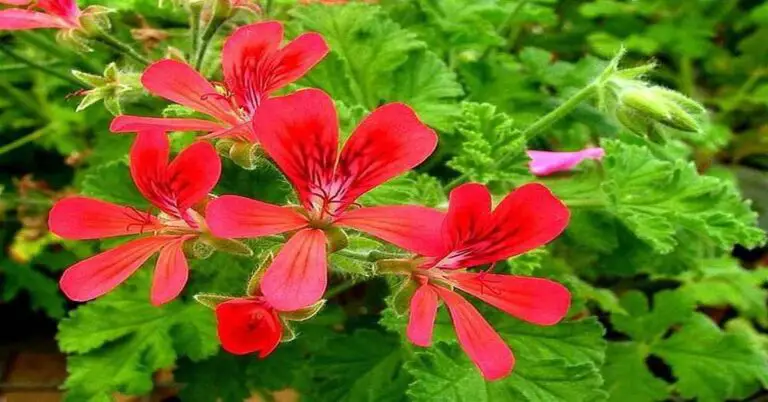
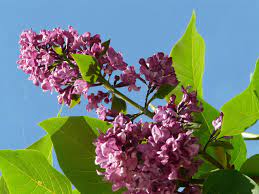
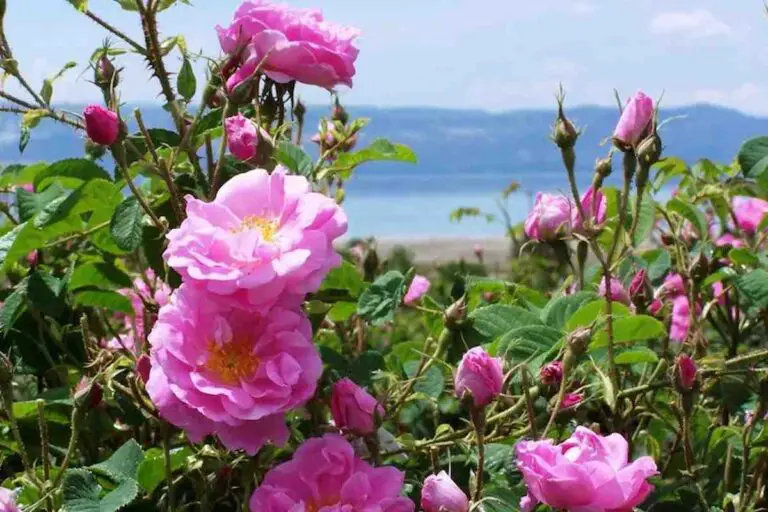

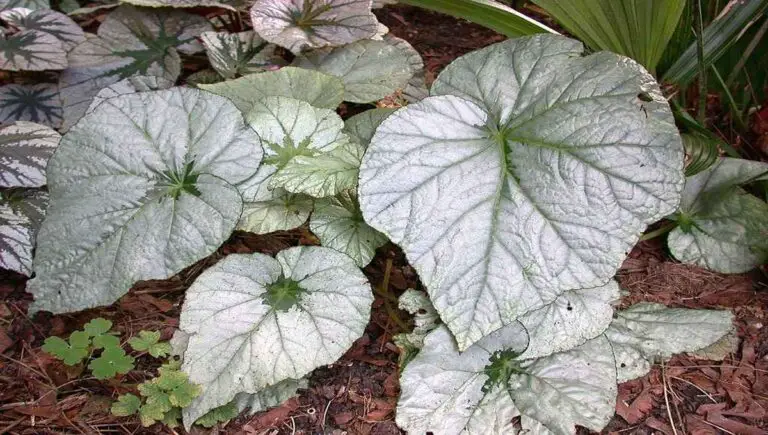
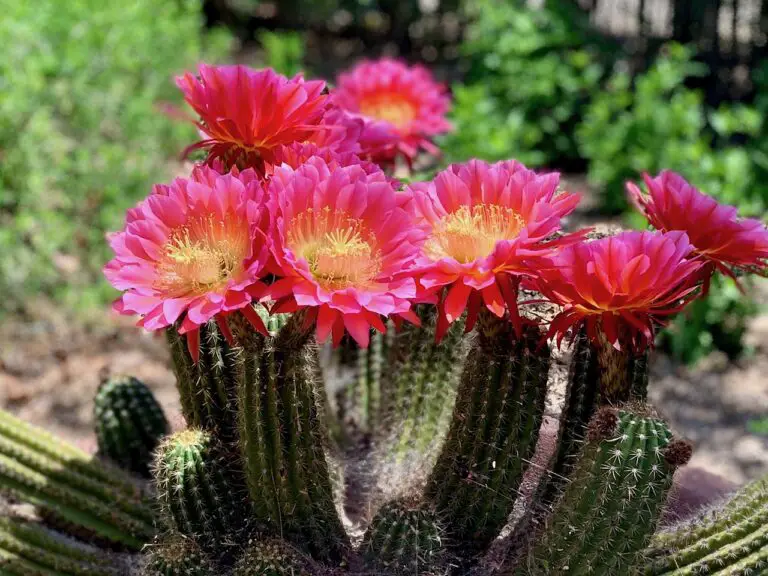

Thanks for sharing. I read many of your blog posts, cool, your blog is very good.